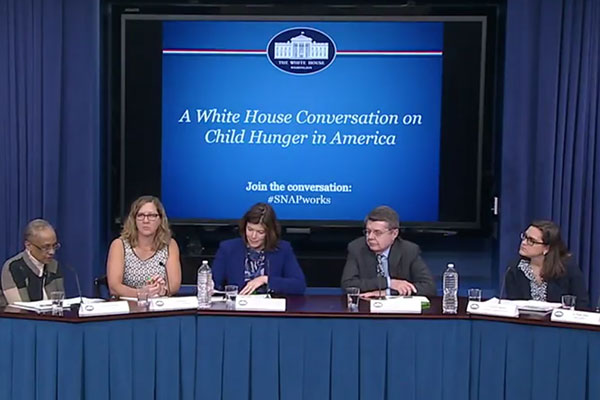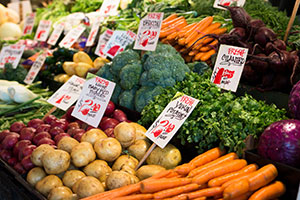The difference between eating well and a low-quality diet in the U.S. is only about $1.50 per person per day, a University of Washington professor told a White House audience on Wednesday.

That doesn’t sound like much, but it adds up to more than $500 per year or $2,000 for a family of four. “And that is really very substantial,” said Adam Drewnowski, professor of epidemiology at the UW School of Public Health.
Drewnowski said the federal Supplemental Nutrition Assistance Program (SNAP), formerly known as food stamps, and other programs “make the playing field a bit more even.” But they aren’t enough for lower-income Americans to get the nutrition they need.
Drewnowski, director of the UW’s Center for Public Health Nutrition, took part in a White House panel on child hunger in America and the role of SNAP. About 46 million Americans receive SNAP benefits, with the average subsidy amounting to $4 per person per day. Other experts at Wednesday’s event noted that SNAP has eased poverty for some families while contributing to better health and educational outcomes.

“It’s a program that works,” said Agriculture Secretary Thomas Vilsack.
But given that each person needs about 2,000 calories per day, each dollar has to buy about 500 calories, Drewnowski noted. “There are very, very few foods which give you 500 calories per dollar, and the nutritious foods generally do not,” he said.
Energy-dense foods, as measured by calories-per-gram, include refined grains and foods with added sugars, oils and fats.
Foods with added sugars can provide up to 3,000 calories per day. “But when you look at fresh peppers or spinach, you are really looking at one to 20 calories per dollar,” Drewnowski said. If you only have $4 to spend per day, he said, “those foods are not going to be on the menu.”
As food budgets shrink at the end of the month, families switch to cheaper foods with “empty calories providing minimum nutritional value, and there are going to be health consequences for that,” Drewnowski said. “Take it a step further and then you have hunger – overt hunger.”

About one in seven American families experience food insecurity – meaning they don’t get enough food or nutrients at some point in the year. Drewnowski says not all low-cost foods are devoid of nutrients. Sweet potatoes, beans, broccoli, carrots, oranges, milk and nuts provide high amounts of valuable nutrients per penny.
Drewnowski highlighted the dietary gap between rich and poor. In the U.S., he said, the rich spend less than 6 percent of their incomes on food, whereas low-income families can spend as much as 36 percent of theirs – a rate that resembles what you’d find in low- and middle-income countries.
Lower-income groups purchase more cereals, pasta and fatty meats, while better-off Americans tend to buy whole grains, seafood, lean meats, fresh vegetables and fruit.
Drewnowski told the White House crowd he believed healthier diets are possible on limited incomes. “The combination of (increased) purchasing power, education and cooking skills contribute to what we have been calling nutrition resilience,” he said.
During the day’s second panel, a former SNAP recipient, Dawn Pierce, of Boise, Idaho, said she was grateful for benefits that helped her and her son after she lost her job during the recession. “The face of hunger looks like any one of us,” she said. “SNAP is a lifeline for families that fall on hard times.”
The White House announced Wednesday that President Obama’s next budget will invest $12 billion over 10 years for a summer meal program for lower-income families with children. It also said the US Department of Agriculture will announce a new plan that would allow 20 states to use Medicaid data to automatically link low-income children to free and reduced-price lunch programs.
Read Adam Drewnowski’s research brief, Can All Americans Afford a Healthy Diet?
Watch a White Conversation on Child Hunger in America (starting at the 30:00 mark)
